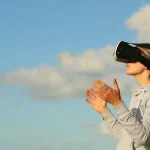Education in postmodernity educación en la posmodernidad represents a profound shift in the way we perceive, approach, and deliver education. Defined by rapid technological advancement, globalization, and a focus on relativism, postmodern education raises significant questions about the purpose and methods of learning in contemporary society.
This blog explores the nuances of this pressing topic. From understanding its foundational traits to examining the challenges and opportunities it presents, we’ll provide a thorough guide for educators, policymakers, and students alike. A comprehensive table illustrating the contrasts between modernity and postmodernity in education will also help contextualize these transforming ideals.
What Defines Education in Postmodernity?
At its core, postmodern education moves away from the rigid frameworks of the Enlightenment era. Instead of valuing uniformity and the search for absolute truths, it celebrates plurality, subjectivity, and decentralized knowledge.
Characteristics of Education in Postmodernity
Relativism Over Absolutism:
Postmodernity rejects single “truths” in education (e.g., one historical narrative). Instead, it encourages exploring multiple viewpoints and interpretations.
Focus on Diversity:
Inclusion of different cultures, identities, and value systems comes to the forefront, making multicultural education increasingly critical in this paradigm.
Shift Towards Lifelong Learning:
Postmodernity underlines education as a lifelong process rather than a singular phase confined to schooling. Skills like adaptability become key.
Integration of Technology:
Digital tools play a critical role in adapting to the challenges and opportunities of postmodern education. Personalized learning, for example, thrives because of AI and data analytics.
Decentralization and Democratization of Knowledge:
Traditional teacher-student hierarchies are replaced with collaborative models, emphasizing shared learning rather than authority-defined teaching.
A Comparative Table of Modern and Postmodern Education
|
Aspect |
Modern Education |
Postmodern Education |
|---|---|---|
|
Core Philosophy |
Absolutism; singular truths |
Relativism; diverse perspectives |
|
Learning Approach |
Standardized curriculums |
Personalized, flexible learning paths |
|
Technology Integration |
Limited to classroom tools |
Pervasive; blended and online learning models |
|
Role of Teachers |
Authority figures, knowledge providers |
Facilitators, guides in collaborative learning |
|
Students’ Role |
Passive recipients of knowledge |
Active participants and co-creators of knowledge |
|
Purpose of Education |
Preparing for specialized professions |
Preparing for lifelong adaptability and critical skills |
Challenges of Education in Postmodernity
While postmodern education appears progressive and diverse, it also comes with several challenges that need to be addressed for its full potential to be realized.
1. Crisis of Truth:
With multiple interpretations accepted as valid, society risks the inability to distinguish fact from opinion. This can be particularly problematic in subjects like history, science, and law.
2. Role of Technology:
Though empowering, over-reliance on technology in postmodern education may create divides. Students from underprivileged regions often lack access to these resources, perpetuating inequality. Furthermore, overexposure to screens and digital content can affect attention spans and critical thinking abilities.
3. Evolving Teacher Roles:
Guiding rather than instructing is not a skill all teachers are automatically equipped with. Postmodernity requires re-skilling the teaching workforce, which is a lengthy and resource-intensive process.
4. Cultural Relativism:
While cultural inclusivity is a strength, it can sometimes generate tension. When no single cultural or value system prevails, it may lead to disagreements or polarization in schools and universities.
5. Assessment and Validation:
Traditional metrics for student performance, like standardized tests, often struggle to align with the subjective and experiential focus of postmodern learning models.
Opportunities in Education During Postmodernity
Amid challenges, education in postmodernity offers plentiful opportunities to design a 21st-century learning paradigm.
1. Customization at Scale
Thanks to advances in data and technology, educators can design personalized learning experiences catering specifically to students’ strengths, needs, and preferences. AI-powered tools like adaptive learning platforms exemplify this.
2. Collaborative Global Classrooms
Postmodernity thrives on interconnectedness. Cross-school and cross-border collaborations, enabled through tools like video conferencing and collaborative documents, prepare students for globalized workplaces.
3. Critical Thinking as a Core Skill
The plurality of ideas in postmodern education cultivates critical thinking and debate. Students learn not only to formulate opinions but also to back them with reasoned arguments.
4. Value-Based Learning
Subjects like emotional intelligence, ethics, and environmental consciousness gain recognition as important components of the curriculum. They equip students to tackle issues of sustainability, inclusion, and social justice.
5. Empowered Students
Students in postmodern educational systems take ownership of their learning journeys. By offering choice and fostering independence, they become more engaged and motivated participants in education.
Steps to Adapt Education to the Postmodern Era
For educators and institutions aiming to adopt postmodern principles, here are the suggested steps to simplify the transition.
1. Update Curriculums
Reflect diverse voices, global perspectives, and complex topics such as climate change in modern curriculums. Integrating ethics alongside core subjects imbues students with a holistic worldview.
2. Invest in Technology and Training
Provide access to learning technologies, but ensure educators are equally equipped to use them effectively. Regular professional development programs can ease the transition. educación en la posmodernidad.
3. Encourage Interdisciplinary Learning
Break down subject silos to enable students to make connections between fields. Offer courses like “Environmental Science and Literature” or “Data Analytics for Social Justice.”
4. Promote Collaboration over Competition
Shift the focus in classrooms from individual achievement to teamwork, fostering trust and shared problem-solving skills.
5. Focus on Inclusivity
Ensure materials and practices cater to students with different socioeconomic, cultural, or personal needs. This includes everything from translating instructional material to providing tools for differently-abled learners.
6. Evaluate Through Holistic Metrics
Adopt flexible grading policies, self-assessments, and project-based evaluations to capture a complete picture of a student’s growth.
Achieving a Balanced Approach in Education
Education in postmodernity represents a crucial step towards a more inclusive, adaptable, and student-centric system. But success involves striking a balance one that doesn’t undermine basic universal skills or discourage critical thought. Educators and policymakers alike must be agile in evolving curriculums, methodologies, and infrastructures to meet these new demands. The goal is to not dismiss the wisdom of the past but to integrate it with the realities of the present and future.
educación en la posmodernidad?





